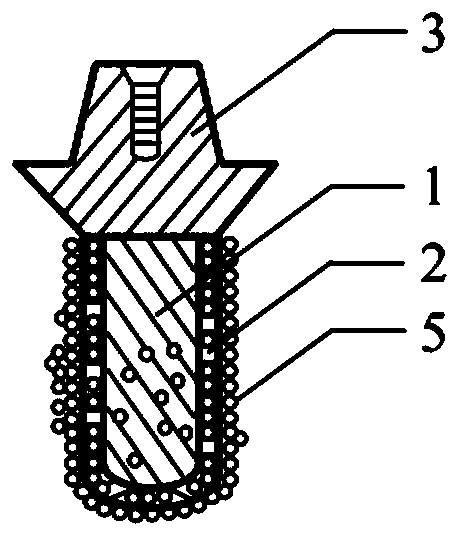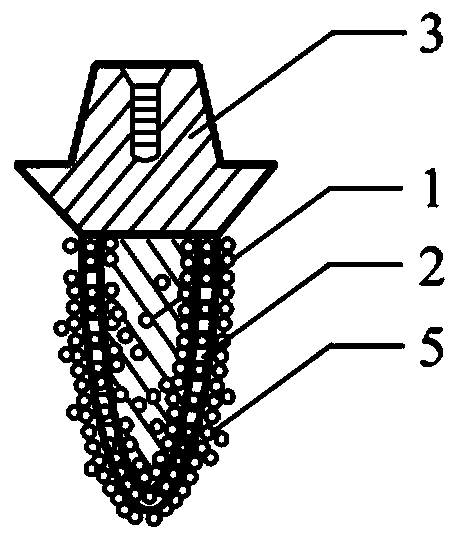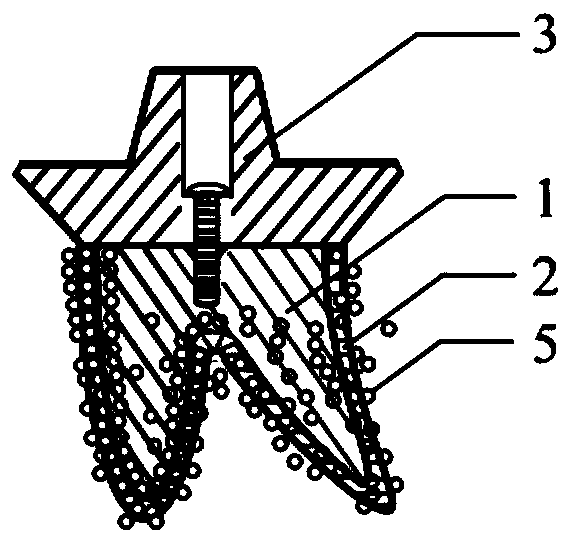Personalized biomimetic dental implant and manufacturing method thereof
A technique for dental implants and implants, which is applied in the fields of dental implants, dentistry, and dental restorations. It can solve problems such as stress concentration and stress shielding, hinder the operation cycle, and incomplete cleaning, and achieve rapid and firm osseointegration and induction. Osteocyte generation, favorable effect on adhesion
- Summary
- Abstract
- Description
- Claims
- Application Information
AI Technical Summary
Problems solved by technology
Method used
Image
Examples
Embodiment Construction
[0071] In order to further understand the content, characteristics and effects of the present invention, the following examples are given, and detailed descriptions are as follows in conjunction with the accompanying drawings:
[0072] Such as Figure 1-7 As shown, a complete implant denture is mainly composed of three parts: crown 4 , abutment 3 , and implant body 1 . Wherein, the implant body 1 is the part where the implant denture is combined with the bone tissue, that is, the artificial tooth root, which is directly implanted into the patient's alveolar bone to play a role of fixation and support. The abutment 3 is located between the implant body 1 and the crown 4, and is connected to the implant body 1 apically, and connected to the crown 4 toward the coronal side, so as to connect the preceding and the following. The abutment 3 can be made separately or can be integrally made with the implant body 1 by 3D printing. Both the implant body 1 and the abutment 3 are not di...
PUM
 Login to View More
Login to View More Abstract
Description
Claims
Application Information
 Login to View More
Login to View More - R&D
- Intellectual Property
- Life Sciences
- Materials
- Tech Scout
- Unparalleled Data Quality
- Higher Quality Content
- 60% Fewer Hallucinations
Browse by: Latest US Patents, China's latest patents, Technical Efficacy Thesaurus, Application Domain, Technology Topic, Popular Technical Reports.
© 2025 PatSnap. All rights reserved.Legal|Privacy policy|Modern Slavery Act Transparency Statement|Sitemap|About US| Contact US: help@patsnap.com



